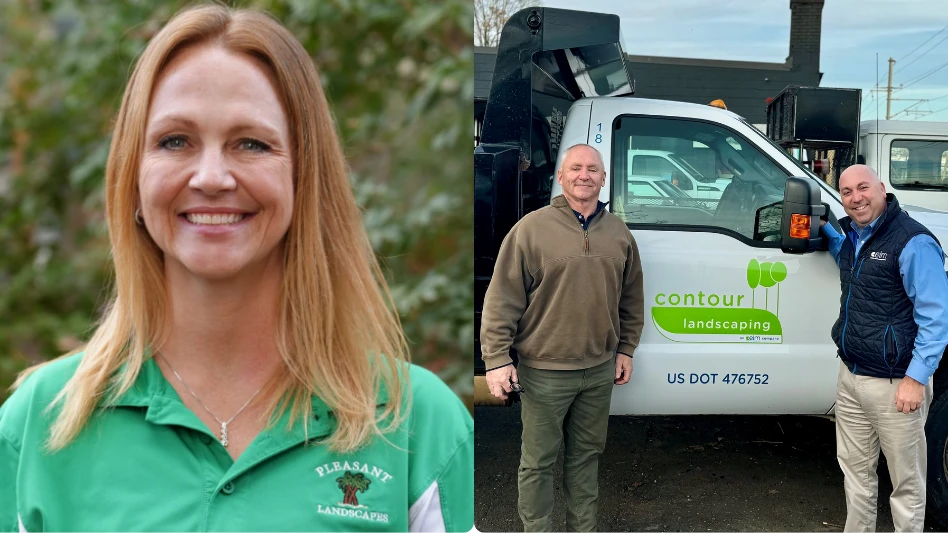
With the tap of an app and a few swipes, you can adjust irrigation system run-times and change the colors of individual outdoor lights illuminating the landscape. (That includes opting for your favorite team colors before the big game.) If there’s a problem with a sprinkler head, an irrigation service technician gets a notification and a work order is automatically submitted – and even managed remotely.
This is what smart, connected systems and services look like, and businesses like Quality Services in North Ridgeville, Ohio, are purposely disrupting their own business models to make way for technology. “Do I think this will work for every customer – no, absolutely not,” says John Newlin, owner of Quality Services. He expects about 5 percent of his customer base to jump on the bandwagon of Wi-Fi irrigation controllers.
But, Newlin’s accounts include second homes along the Lake Erie shores, and these residents are grappling for the type of technology that allows them to control home systems when they’re not around, he says.
Newlin says he’s an early adopter, and he’s excited about the potential of smart home features that can make outdoor enhancements and systems (like irrigation) run with even simple voice commands. (Think Siri in the landscape.) “We’re looking for customers who want us to manage their water and fertilization programs – smart technology will be a higher-end niche,” he says.
At Earth Effects Outdoor Living in Lee’s Summit, Missouri, near Kansas City, a rebranding of the company from lawn-and-landscape to outdoor living is positioning the firm to offer more smart home features to clients. “We’re pushing it hard,” says Daniel Henks, president, noting that the company installed more than 50 smart irrigation controllers following a promotion last year. “We enjoy it from a team aspect, and it gets great customer reviews, so it has been a smooth transition,” he says. “For those who gravitate toward using their phones or apps, they transition easily because they like the technology.”
Promoting a smart switch.
Watering efficiency is the big selling point for Aqualon customers that have adopted smart irrigation controllers. The Tipp City, Ohio, business located near Dayton got into the technology last year and has seen some adoption. “We had a handful of customers who were really interested and made the upgrade,” says Service Manager Dan Koval, noting that for some, the Wi-Fi controllers came with a brand-new install – and for others, it was an enhancement during a system retrofit.
“The biggest way we sell the smart controller is by talking about more efficient watering, not using more water than you need, and being able to automatically adjust the system in seconds,” Koval says.
Because the Dayton, Ohio, region is situated on a giant aquifer, people there are less tuned into water conservation than in other areas of the country, Koval says. “People who have irrigation systems might not be looking at their water bills or thinking about the money they could save.”
So, it’s his job to help them understand the potential savings that smart systems can deliver. The main barrier now is education and return on investment, Koval says. “There is an added expense involved in upgrading the controller,” he says. But Koval proved the savings by offering to put in a free controller on one client’s property. “Try it, if you don’t like it, I’ll put the old controller back in,” he told her.
Interestingly, this was an older customer who you might expect would prefer the old way. However, she uses an iPad to talk to her grandkids and uses apps regularly. “The interface on the Wi-Fi controller (app) is much easier for her to understand, and it helped her out a lot,” Koval says. Needless to say, she didn’t ask Koval to take the smart controller out.
Newlin launched an email campaign last year to alert clients that they could swap out the same-old irrigation controller with the smart, Wi-Fi version. “We had about 40 replies from that blitz,” he says of requests for the upgrade.
Often, opportunities to introduce the technology occur in the field. “When our technicians are out talking to customers or if their controllers are on the fritz, that’s when we’ll propose the smart controller,” Henks says. “And, we’ll send out promotions as sprinkler season gets near and provide a special offer. Or, while we’re performing another service, we’ll offer the controller at a certain price to get people interested in it.”
For tech-savvy mobile clients, the smart alternative is enticing and easy to use. “They gravitate toward it easily,” Henks says.
You can never stop learning – and teaching crews. “There is a learning curve,” Henks says.
Newlin explains that even with Wi-Fi controllers, there are different “levels” of technology. A basic setup allows clients to control the system remotely, and Quality Services to monitor the system via a dashboard. Adding a layer to that, the software will integrate with smart controllers to create work orders when a problem arises. Koval explains how some smart controllers feed data to a “database” (belonging to the manufacturer), so there is record of water usage.
Aside from controllers, there are “smarter” sprinkler heads that are more efficient, Koval says. And, as Henks is exploring, the outdoor environment can come to life with smart lighting and remote features (fire pits, water features) that let homeowners customize and just have fun with the systems.
Henks says, “I’m hopeful and excited for how we’ll expand on the technology and include platforms that do more than lighting, but other customizable parts so owners can create their own environment.”
Latest from Lawn & Landscape
- LawnPro Partners acquires Ohio's Meehan’s Lawn Service
- Landscape Workshop acquires 2 companies in Florida
- How to use ChatGPT to enhance daily operations
- NCNLA names Oskey as executive vice president
- Wise and willing
- Case provides Metallica's James Hetfield his specially designed CTL
- Lend a hand
- What you missed this week





